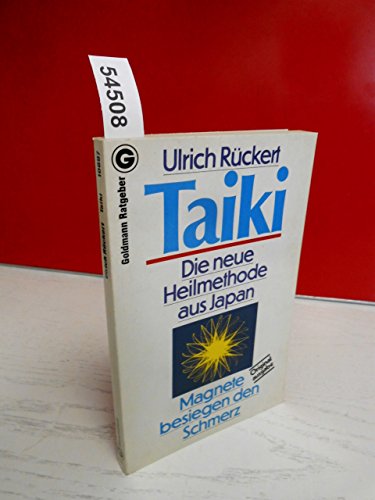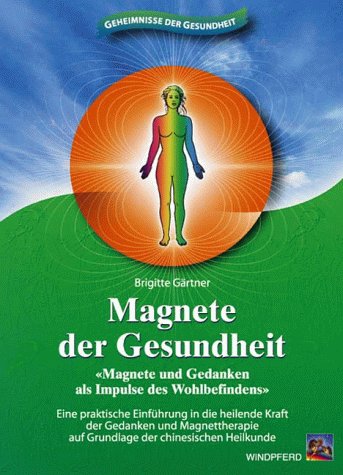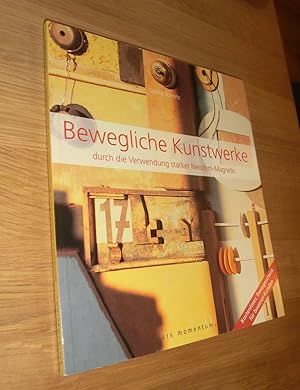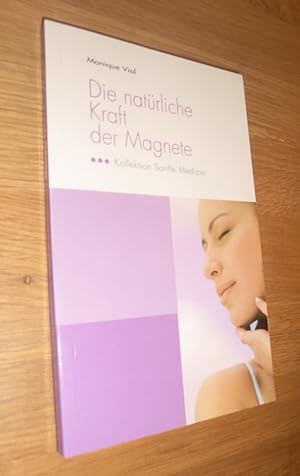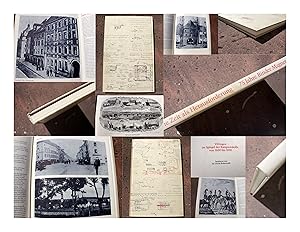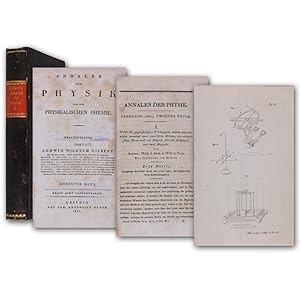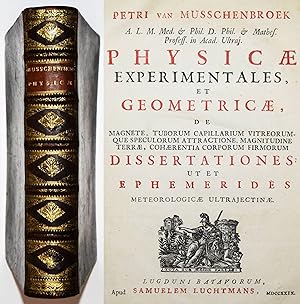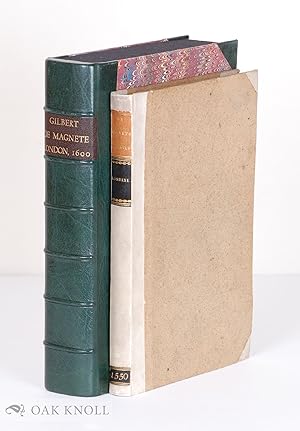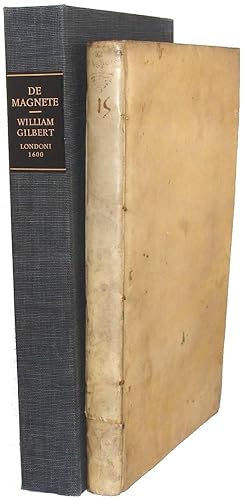Magnete, First Edition (24 results)
Product Type
- All Product Types
- Books (24)
- Magazines & Periodicals
- Comics
- Sheet Music
- Art, Prints & Posters
- Photographs
- Maps
-
Manuscripts &
Paper Collectibles
Condition
- All Conditions
- New
- Used
Binding
Collectible Attributes
- First Edition
- Signed
- Dust Jacket
- Seller-Supplied Images (9)
- Not Printed On Demand
Free Shipping
Seller Location
Seller Rating
-
On the Magnet and Notes on De Magnete of Dr. William Gilbert NO INTERNATIONAL OR PRIORITY.
Published by Basic Books, NY, 1958
Seller: AardBooks, Fitzwilliam, NH, U.S.A.
First Edition
1st THUS. 4to. 247 + 67 pp. Slipcase is in 2 pieces, and those not even in good condition! If. you're clever with glue.Front cover label is nice. Note at the end of the index states this translation was printed for. members of the Gilbert Club, in an edition of 250 copies. Not sure that. this is accurate for this edition, as I've had it a couple of times over. the years, and that doesn't usually happen with editions of 250! VG+. Bookplate. (see note about terrible slipcase).
-
Taiki - Die neue Heilmethode aus Japan - Magnete besiegen den Schmerz
Published by Goldmann München 1983, 1990
ISBN 10: 3442108977ISBN 13: 9783442108978
Seller: Antiquariat Buchtip Vera Eder-Haumer, Wien, W, Austria
Book First Edition
Condition: 0. 1. aufl. Sprache: Deutsch 189 Seiten, Okart / paperback kl-8° taschenbuch, guter Zustand.
-
Magnete der Gesundheit. "Magnete und Gedanken als Impulse des Wohlbefindens". Eine praktische Einführung in die heilende Kraft der Gedanken und Magnettherapie auf Grundlage der chinesischen Heilkunde
Published by Aitrang : Windpferd, 1998
ISBN 10: 3893852840ISBN 13: 9783893852840
Seller: ralfs-buecherkiste, Herzfelde, MOL, Germany
Book First Edition
Softcover, 17*23 cm. Condition: Gut. 1. Auflage. 133 Seiten guter Zustand mx72986 Altersfreigabe FSK ab 0 Jahre Sprache: Deutsch Gewicht in Gramm: 350.
More buying choices from other sellers on AbeBooks
Used offers from US$ 4.40
Also find First Edition
-
Bewegliche Kunstwerke: durch die Verwendung starker Neodym-Magnete
Published by ars momentum Kunstverlag, Witten, 2014
ISBN 10: 3938193867ISBN 13: 9783938193860
Seller: Dipl.-Inform. Gerd Suelmann, Meppen, NDS, Germany
Book First Edition
Softcover. Condition: Sehr gut. 1. Auflage. Autor:Schmitz, Sabine - Titel:Bewegliche Kunstwerke: durch die Verwendung starker Neodym-Magnete; Einband:Softcover,Zustand:Sehr Gut, , Verlag:ars momentum Kunstverlag, Erscheinungsjahr:2014, Erscheinungsort:Witten. Gut bis sehr gut erhalten, kaum berieben, keine Beschriftungen gefunden. ; Gewicht:150 g.
-
Die Natürliche Kraft Der Magnete - Magnetfeldtherapie Sanfte Medizin
Published by Auris SARL, Frankreich, 2010
ISBN 10: 2353790151ISBN 13: 9782353790159
Seller: Dipl.-Inform. Gerd Suelmann, Meppen, NDS, Germany
Book First Edition
Taschenbuch. Condition: Gut. 1. Auflage. Autor:Monique Vial - Titel:Die Natürliche Kraft Der Magnete - Magnetfeldtherapie Sanfte Medizin; Einband:Taschenbuch,Zustand:Gut, , Verlag:Auris SARL, Erscheinungsjahr:2010, Erscheinungsort:Frankreich. Gut bis sehr gut erhalten, kaum berieben, keine Beschriftungen gefunden. Eine Einführung in die Magnetfeldtherapie. Darin wird Laien die versteckte Kraft der Magnete enthüllt, die Tag für Tag neue Wirkung zeitg, Erstaunen auslöst und mit der Magnetfeldtherapie großartige Entwicklungsschritte macht. ; Gewicht:70 g.
-
Die Zeit als Herausforderung: 75 Jahre Binder Magnete. / Villingen im Spiegel der Ratsprotokolle von 1830 bis 1930. Bearbeitet von Ulrich Rodenwaldt. Mit zahlreichen, teils ganzseitigen Abbildungen. Buchgestaltung von Ursula Deimling-Binder. Erstausgabe.
Published by Binder-Magnete GmbH, Villingen-Schwenningen, 1986
Seller: Versandantiquariat Abendstunde, Ludwigshafen am Rhein, Germany
First Edition
Hardcover/gebunden. Condition: gut. Erste Aufl. Großformatiger fadengehefteter und illustrierter Pappeinband mit Rückentitel. Der Buchrücken partiell nachgedunkelt bzw. gebräunt, ansonsten guter Erhaltungszustand. Gedruckt in zwei Farben auf Büttenpapier. In deutscher Sprache. 93, (3) pages. 4° (195 x 300mm).
-
UBER DIE APERIODISCHE BEWEGUNG GEDAMPFTER MAGNETE
Publication Date: 1869
Seller: Xerxes Fine and Rare Books and Documents, Glen Head, NY, U.S.A.
First Edition
Condition: Good. Article on pp. 806-852 in one complete issue of Monatsbericht der Akademie der Wissenschaften zu Berlin, November 1869. First edition. Original printed octavo wraps. Uncut. Many additional articles in issue as well. Good plus. No ownership marks; light wear and light soiling on cover.
-
The De Magnete of William Gilbert.
Published by Amsterdam: Menno Hertzberger, 1959., 1959
Seller: Scientia Books, ABAA ILAB, Arlington, MA, U.S.A.
Book First Edition
Hardcover. Condition: Near Fine. 1st Edition. Frontispiece, 196 pp; 28 figs. Original cloth. Spine a little sunned, else Very Good. This copy does NOT have any library markings. First Edition.
-
Supraleiter und supraleitende Magnete.
Published by Berlin und München, Siemens AG (Hg und Verlag),, 1975
ISBN 10: 3800912066ISBN 13: 9783800912063
Seller: Fabula Antiquariat, Haren, NI, Germany
Book First Edition
kartoniert. kl. 8°, 96 S.; mit zahlreichen s/w Abb., Zeichnungen, Grafiken, Schaubildern, Tabellen, Bibl.Ex., Bezahlung per PayPal möglich, we accept PayPal, Stempel u. Nr. a. Vorsatz od. u. Titel, Nr. a. Rücken bzw. Einband, ger. Gebr.sp.,
-
Esercizi di lettura per le scuole DELLA RECLUSIONE MILITARE Maestro <normale Ai monitori delle scuole DELLA RECLUSIONE MILITARE - Lettura di proposizioni e di Frasi - Il Cielo - Terra - Aria - Acqua - Meteore - Luce - Calore - Magnete - Corpi - Regno minerale - Regno vegetale - Regno Animale - Animali invertebrati - Gli uccelli in generale - Animali invertebrati - Raggiati - L'uomo - Doveri dell'uomo - Invenzioni relative alla Guerra - Cenni sulla Geografia - Europa - Africa - Asia - America - Oceania
Published by Tip. Reclusione Militare, Gaeta, 1866
Seller: BACCHETTA GIORGIO - ALFEA RARE BOOKS, Milano, Italy
First Edition
Volume: 1 17x10 cm., legatura in mezza pergamena, titolo manoscritto al centro del piatto e sul dorso, pp. 366 (2),prima edizione, in italiano, buone condizioni, solo leggeri segni d'uso e tempo. Firme di appartenenza.
-
Magnete. Grundlagen - Aufbau - Anwendungen.
Published by München, Verlag Karl Thiemig,, 1973
ISBN 10: 3521060829ISBN 13: 9783521060821
Seller: Fabula Antiquariat, Haren, NI, Germany
Book First Edition
broschiert. kl. 8°, 230 S.; Thiemig-Taschenbücher Band 49; mit zahlreichen s/w Zeichnungen, Grafiken, Schaubildern, Bibl.Ex., Bezahlung per PayPal möglich, we accept PayPal, Stempel u. Nr. a. Vorsatz od. u. Titel, Nr. a. Rücken bzw. Einband, Einb. ger. beschabt u. min. angeschmutzt, altersbed. Bräunungen, ger. Gebr.sp.,
-
The De Magnete of William Gilbert.
Published by Amsterdam: Menno Hertzberger, 1959., 1959
Seller: Ted Kottler, Bookseller, Redondo Beach, CA, U.S.A.
First Edition
Hardcover. Condition: Near Fine. No Jacket. 1st Edition. First Edition. Frontispiece, 196 pp; 27 figs. Original cloth, large 8vo. Near Fine, in glassine dust jacket.
-
Ueber die gegenseitigen Wirkungen, welche auf einander ausüben zwei electrische Ströme, ein electrischer Strom und ein Magnet oder die Erdkugel, und zwei Magnete. Frei bearbeitet von Gilbert. SS. (113)-163 und (225)-258. Mit 4 Tafeln. In: Annalen der Physik und der physikalischen Chemie. Hrsg. L. W. Gilbert. Band 67.
Published by Leipzig Barth, 1821
Book First Edition
(20 x 12,5 cm). (12) 444 S. Mit 8 gefalteten Kupfertafeln und 4 gefalteten Tabellen. Pappband der Zeit. Erste deutsche Ausgabe. "The first of a series of important papers reporting his discoveries on the electric current" (Sparrow). - "Ampère entdeckt in Weiterführung der Oersted'schen Entdeckung (aus dem gleichen Jahr), daß bewegliche stromführende Leiter in der Umgebung von Magneten Bewegungsantriebe erfahren, und daß auch ohne Vorhandensein von Magneten stromdurchflossene Leiter aufeinander Kraftwirkung äußern. Er zeigt die Möglichkeit, bezüglich der magnetischen Fernwirkungen jeden Magneten durch entsprechend angeordnete Elementarströme oder umgekehrt jeden stromführenden Leiter durch passend gewählte Magnete zu ersetzen" (Darmstaedter). - Von 1821 bis 1823 veröffentlichte Ampère mehrere Arbeiten zur Elektrodynamik unter dem gleichen Titel, aber mit unterschiedlichen Inhalten. - Titel und Tafeln verso gestempelt. Stellenweise etwas stockfleckig. Oberes Kapital leicht abgestoßen, sonst gut erhalten. - DSB 1, 143; Darmstaedter 335; vgl. Sparrow, Milestones of Science 8 und Dibner, Heralds of Science 62 (beide die frz. EA).
-
On the Magnet [WITH] Notes on the De Magnete of Dr. William Gilbert
Published by Chiswick Press (for the Gilbert Club), London, 1900
Seller: ERIC CHAIM KLINE, BOOKSELLER (ABAA ILAB), Santa Monica, CA, U.S.A.
First Edition
Hardcover. Condition: Nearly Fine. First edition. 1/250. Two parts, folio. [16], 246, [2, colophon & blank]; iv, 67, [1, blank]pp. With bibliographical references and index; separate title for the Notes (dated 1901); decorative initials and ornaments; diagrams throughout (1 folding). Full limp vellum, spine lettered in gilt; green silk ties. Offsetting at endleaves from ties; a few pages with touches of mild to light foxing. A nearly fine copy. First edition (limited to 250 copies) of this English translation of the author's De Magnete, Magneticisque Corporibus et de Magno Magnete Tellure (London, 1600), reproducing the woodcut illustrations and diagrams of the original edition. The physician and natural philosopher William Gilbert (1544?-1603) "provided the first comprehensive and satisfactory explanation of the behaviour of the nautical magnetic compass." The present work, and the only one published in his lifetime, secured the author's enduring significance as it announced a new science of the earth. His rejection of the Aristotelian-Galenic theory of matter, along with the traditional division by Christian Aristotelians of the cosmos into a superior celestial world and an inferior terrestrial one was influenced by Bernardino Telesio and Francesco Patrizi, and especially the vitalist, infinite universe described by Giordano Bruno. Along with Francis Bacon, Gilbert "pioneered the iconoclastic modern positions that knowledge progressed, and that science needed to begin anew on empirical and experimental foundations" (ODNB). References: S. Pumphrey, "William Gilbert" [in:] ODNB. Full title: William Gilbert of Colchester, Physician of London. On the Magnet, Magnetick Bodies Also, and on the Great Magnet the Earth; a New Physiology, Demonstrated by Many Arguments & Experiments. London: Imprinted at the Chiswick Press Anno MCM.
-
Physicae Experimentales, et Geometricae, de Magnete, Tuborum Capillarium Vitreorum-que Speculorum Attractione, Magnitudine Terrae, Cohaerentia Corporum Firmorum Dissertationes: ut et Ephemerides Meteorologicae Ultrajectinae
Published by Samuelem Luchtmans, Lugduni Batavorum, 1729
Seller: Sanctuary Books, A.B.A.A., New York, NY, U.S.A.
First Edition
Hardcover. Condition: Very Good. First Edition. Contemporary vellum over boards; 4to (260x192mm); pp. [10], 685, plus folding copper-engraved plates numbered I-XXVIII and a folding table. Vellum a little soiled and rubbed; tail of spine perished, and vellum torn along bottom edge of boards. Early ownership signature neatly excised from bottom margin of title-p.; some marginal foxing, affecting some of the plates, but contents are overall nice and clean. Only plate XXIII is significantly soiled. Includes an early map of California, depicting it as an island.
-
Physicae experimentales, et geometricae, de magnete, tuborum capillarium vitreorumque speculorum attractione, magnitudine terrae, cohaerentia corporum firmorum dissertationes: ut et ephemerides meteorologicae ultrajectinae.
Published by Lugduni Batavorum (Leiden), Samuel Luchtmans 1729., 1729
Seller: Antiquariat Haufe & Lutz, Karlsruhe, BW, Germany
Book First Edition
4°. [5] Bl., 685 S. mit 28 meist gefalt. Kupfertafeln, darunter 1 Karte, 1 Tabelle u. 1 gestoch. u. mehrfach gefalt. Ephemeridentafel. Ldr. d. Zt. mit goldgepr. Rückenschild u. reicher Rückenverg. Bierens de Haan 3480 ff. DSB IX, 594 ff. Poggendorff II, 247. Roller/Goodman II, 223. Wheeler Gift I, 268. - Erste Ausgabe. - Vorwiegend mit Experimenten zu den magnetischen Eigenschaften von Körpern. Die schönen Tafeln zeigen Versuchsaufbauten, eine Weltkarte und die magnetischen Linien nach Halley. - "The principal source of inspiration was Newton; but Galileo, Torricelli, Huygens, Réaumur, and others were important to this school. Since the mind, Musschenbroek states in his Elementa physicae (1734), has no innate idea of what bodies and their qualities are, we can obtain knowledge about them only by observation and experiments. But we must be extremely careful, use good instruments, and take into consideration all circumstances -atmospheric pressure, temperature, locality, and weather. Thus we can discover the laws that govern the behavior of bodies, provided the results of experiments, repeated over and over again, are the same, and specific causes are admitted only when the phenomena investigated leave no doubt. The stress is therefore on induction; but deduction, for example, by means of mathematics, is admissible, as Newton had shown, provided such deductions are constantly tested by experiment. The success of such reasoning on the basis of careful experimentation finds its guarantee in the infinite wisdom of the Supreme Being" (DSB IX, 596). - P. van Musschenbroek (1692-1761) gilt als einer der Erfinder der sogen. Leidener Flasche, heute bekannt als Kondensator. - Einband etwas berieben, stellenweise etwas gebräunt und vereinzelt braunfleckig, schönes dekorativ gebundenes Exemplar. Sprache: latein.
-
De Magnete, magneticisque corporibus, et de magno magnete tellure; Phisiologia nova, plurimis & argumentis, & experimentis demonstrata.
Published by London Peter Short, 1600
Book First Edition
First edition; folio (30.5 x 19.5 cm); text in Latin, woodcut title device and large woodcut arms on verso, one folding plate, 87 woodcuts in text of which 4 are full-page, decorative woodcut initials and head- and tail-pieces, title page trimmed, partially restored and washed (possibly from another copy), scattered light foxing; later calf with unidentified gilt armorial device to covers, gilt lettering to spine, short split to spine, extremities slightly rubbed, otherwise an overall very good copy; [xvii], 240, [2](blank)pp. First edition of the first great scientific book printed in England. William Gilbert, personal physician to both Elizabeth I and James I, gathered all known opinions relating to the magnet and put them to the test of experiment, thereby being among the first to initiate the experimental method of science. De magnete exemplifies pre-Baconian experimental philosophy by supporting new theories with empirically-derived experimental evidence, and these experiments were described in sufficient detail for the reader to recreate them. Gilbert also described his scientific instruments in great detail, including new ones such as the 'versorium': the first instrument to be used for the study of electric phenomena. Gilbert observed that the earth was a gigantic magnet and provided a physical basis for the Copernican theory. His work was cited by Digby, Boyle, Kepler and Huygens, and Galileo drew on Gilbertian magnetism to support his belief in a Copernican heliocentric cosmology in his Dialogo. Dibner Heralds 54; Grolier Science 41; Norman 905; PMM 107; Wellcome 2830.
-
DE MAGNETE, MAGNETICISQUE CORPORIBUS, ET DE MANGO MAGNETE TELLURE; PHYSIOLOGIA NOVA, PLURIMUS & AEGUMENTIS, & EXPERIMENTIS DEMONSTRATA
Published by Petrus Short, Londini (London), United Kingdom, 1600
Seller: Oak Knoll Books, ABAA, ILAB, NEW CASTLE, DE, U.S.A.
First Edition
Magnetism (illustrator). 4to. quarter vellum, paste paper coverd boards, vellum tips, red and black leather spine label, gilt lettering on spine, clamshell box. [xvi], 240 pages. First edition. Gilbert's (1544-1603) De Magnete is "a remarkable work in the history of scientific discovery. Handwritten corrections, thought to be in Gilbert's own hand, on pp. 11, 22, and 47, but not on 14 or 63 as in some other copies. Minor soiling to covers and minor wear to leather spine labels. Two ex-libris bookplates, one of "Liechtensteinanis" and a more recent bookplate of "Cornelius Hauck Collection, Cincinnati, OH" on front pastedown. Errata slip bound in correcting the error on the spine indicating the date is "1550" when it is in fact "1600". Occasional foxing throughout the text. Previouslly featured at an auction at Christies in 2006. A lovely copy in a very nice contemporary clamshell box. It cost the author 18 years of investigation and experiment. Large marginal asterisks mark what he considered great discoveries, and small asterisks minor ones. There are 21 of the former and 178 of the later. Gilbert shows that a freely suspended magnet is controlled by the earth and not, as supposed, by extra-terrestrial influences. his magnetic theory enabled him to explain the behavior of the compass-needle, the dip-needle, the magnetic condition of vertical masses of iron, and the magnetic properties of heated iron bars when allowed to cool while lying in the magnetic meridian. Gilbert is chary of prose and wrathful in denunciation; he was a staunch Coperican, and warm friend of Kepler and Galileo." [Wheeler Gift.] ". It is with Gilbert, who was physician to Queen Elizabeth I, that the modern development of electricity and magnetism really starts. His book On the Magnet was the first major English scientific treatise based on experimental methods of research. He coined the terms "electricity," "electric force," and "electric attraction". He contended that the earth was one great magnet; he distinguished magnetic mass from weight; and he worked on the application of terrestrial magnetism to navigation." [Printing and the Mind of Man] . Title with woodcut printer's device on recto and Gilbert's woodcut arms on verso. 88 woodcut diagrams and illustrations in text (4 full-page), one folding. Decorative woodcut heard- and tail - pieces and initials. STC 11883. PMM 107. HORBLIT 41. SPARROW 85. DIBNER 54. HOUZEAU & LANCASTER 2870. Norman 905. Osler 675. Wheeler Gift 72. Durling/NLM 2099. ESTC s121112. Neville I, 522. quarter vellum, paste paper coverd boards, vellum tips, red and black leather spine label, gilt lettering on spine, clamshell box.
-
De magnete magneticisque corporibus.
Published by P. Short,, 1600
Seller: Sokol Books Ltd. ABA ILAB, London, United Kingdom
Book First Edition
Hardcover. Condition: Very Good. 1st Edition. FIRST EXAMINATION OF ELECTRICITY IN PRINT FIRST EDITION. Small folio. pp. [16], 240 + 1 folding plate. Roman letter, little Italic. Printer s device to title, Gilbert s woodcut arms to verso, 90 full-page or smaller woodcut diagrams of magnets and experiments on magnetism, decorated initials and ornaments. Title and last verso dusty, small tear from upper blank margin of title, light age yellowing. An excellent, crisp, clean copy in contemporary English vellum, yapp edges, remains of one tie, early ms title to spine, a little soiled, traces of chewing to lower cover, ms 36/6 d T.C. 1713 Oxford to front pastedown. Preserved in folding box. A crisp copy, in contemporary English binding, of the first edition of this ground-breaking, illustrated work on magnetism and electricity, by William Gilbert, the Galileo of Magnetism . The first major English scientific treatise based on experimental methods of research. It is with Gilbert that the modern development of electricity and magnetism really starts (PMM). Gilbert (1544-1603) was physician to Elizabeth I and James I, and a natural philosopher. His masterpiece, De magnete was based on experiments he carried out using a model of the earth called terrella , often portrayed in the woodcut diagrams. His use of electricus in the sense of like amber , here referring to its attractive properties, inspired Sir Thomas Browne to coin the term electricity in 1646. The 6 parts are devoted to lodestones (naturally-magnetized minerals, like Gilbert s own terrella ), magnetic movements, direction, variation, declination and the revolution of the Earth intended as a gigantic magnet. The second chapter of Book II is the earliest ever published on electricity (Mottelay, p.83); here Gilbert discusses his experiments on attraction using a rotating needle electroscope, and concludes by theorizing a differentiation between magnetic and electric bodies. The remainder of Book II deals, amongst others, with magnetic axis and poles, the spherical extension of magnetic force, and how it can be determined by mass or quantity. Book III discusses verticity or the force visible when magnetized iron turns the opposite way, as well as the magnetization of stones, with a large woodcut showing a scientist or ironmonger creating a magnet in his workshop. Book IV examines variations of magnetism in different places due to the Earth s rotation, as well as the construction of a mariner s compass, also portrayed; Book V is a study of the magnetic needle; and Book VI employs the Copernican theory to explain the magnetic nature of the Earth. The work contains a prodigious number and variety of experiments and observations [ ]. It would, indeed, be a miracle if all of Gilbert s general inferences were just, or all his experiments accurate. It was untrodden ground. But, on the whole, this performance contains more real information than any writing of the age in which he lived, and is scarcely exceeded by any that has appeared since (Mottelay, p.89). A very fine copy of this most important scientific work. Gilbert s book influenced Kepler (112), Bacon (119), Boyle (141), Newton (161) and in particular Galileo (128), who used his theories to suggest his own proof of the findings of Copernicus in cosmology (PMM). ESTC S121112; STC (2nd ed.), 11883; PMM 107; Luborsky & Ingram 11883; Mottelay, Electricity, p.82; Lowndes III 890; Horblitt 100 Famous Books in Science 41; Norman 905; SNL298.
-
De magnete, magneticisque corporibus, et de mango magnete tellure; Physiologia nova, plurimis & argumentis, & experimentis demonstrate
Published by Peter Short, London, 1600
First Edition
Hardcover. First edition. EVANS 26 - THE FIRST SCIENTIFIC TREATISE ON ELECTRICITY AND MAGNETISM. First edition of "the first major English scientific treatise based on experimental methods of research. Gilbert was chiefly concerned with magnetism; but as a digression he discusses in his second book the attractive effect of amber (electrum), and thus may be regarded as the founder of electrical science. He coined the terms 'electricity,' 'electric force' and 'electric attraction.' His 'versorium', a short needle balanced on a sharp point to enable it to move freely, is the first instrument designed for the study of electrical phenomena, serving both as an electroscope and electrometer. He contended that the earth was one great magnet; he distinguished magnetic mass from weight; and he worked on the application of terrestrial magnetism to navigation. Gilbert's book influenced Kepler, Bacon, Boyle, Newton and, in particular, Galileo, who used his theories [in the Dialogo] to support his own proof of the correctness of the findings of Copernicus in cosmology" (PMM). "Gilbert provided the only fully developed theory . and the first comprehensive discussion of magnetism since the thirteenth century Letter on the Magnet of Peter Peregrinus" (DSB). Although this book does appear with some regularity on the market, copies such as ours in fine condition and in untouched contemporary bindings are rare. "During the fifteenth century the widespread interest in navigation had focused much attention on the compass. Since at that time the orientation of the magnetic needle was explained by an alignment of the magnetic poles with the poles of the celestial sphere, the diverse areas of geography, astronomy, and phenomena concerning the lodestone overlapped and were often intermingled. Navigators had noted the variation from the meridian and the dip of the magnetic needle and had suggested ways of accounting for and using these as aids in navigation. The connection between magnetic studies and astronomy was less definite; but so long as the orientation of the compass was associated with the celestial poles, the two studies were interdependent . "Gilbert divided his De magnete into six books. The first deals with the history of magnetism from the earliest legends about the lodestone to the facts and theories known to Gilbert's contemporaries . In the last chapter of book I, Gilbert introduced his new basic idea which was to explain all terrestrial magnetic phenomena: his postulate that the earth is a giant lodestone and thus has magnetic properties . The remaining five books of the De magnete are concerned with the five magnetic movements: coition, direction, variation, declination and revolution. Before he began his discussion of coition, however, Gilbert carefully distinguished the attraction due to the amber effect from that caused by the lodestone. This section, chapter 2 of book II, established the study of the amber effect as a discipline separate from that of magnetic phenomena, introduced the vocabulary of electrics, and is the basis for Gilbert's place in the history of electricity . "Having distinguished the magnetic and amber effects, Gilbert presented a list of many substances other than amber which, when rubbed, exhibit the same effect. These he called electrics. All other solids were nonelectrics. To determine whether a substance was an electric, Gilbert devised a testing instrument, the versorium. This was a small, metallic needle so balanced that it easily turned about a vertical axis. The rubbed substance was brought near the versorium. If the needle turned, the substance was an electric; if the needle did not turn, the substance was a nonelectric. "After disposing of the amber effect, Gilbert returned to his study of the magnetic phenomena. In discussing these, Gilbert relied for his explanations on several assumptions: (1) the earth is a giant lodestone and has the magnetic property; (2) the magnetic property is due to the form of the substance; (3) every magnet is surrounded by an invisible orb of virtue which extends in all directions from it; (4) pieces of iron or other magnetic materials within this orb of virtue will be affected by and will affect the magnet within the orb of virtue; and (5) a small, spherical magnet resembles the earth and what can be demonstrated with it is applicable to the earth. This small spherical magnet he called a terrella . "In discussing coition Gilbert was careful to distinguish magnetic coition from other attractions. For him magnetic coition was a mutual action between the attracting body and the attracted body. At the beginning of the De magnete he explained several terms that were necessary for understanding his work. One of these was "magnetic coition," which he said he "used rather than attraction because magnetic movements do not result from attraction of one body alone but from the coming together of two bodies harmoniously (not the drawing of one by the other)" (P. Fleury Mottelay, William Gilbert of Colchester . on the Great Magnet of the Earth, 1893, p. liv) . "Book III of the De magnete contains Gilbert's explanation of the orientation taken by a lodestone that is balanced and free to turn, that is, the behavior of the magnetic compass . the orientation of the compass was simply an alignment of the magnetic needle with the north and south poles of the earth. Gilbert gave numerous demonstrations of this with the terrella as well as directions for magnetizing iron. "By the end of the sixteenth century, navigators were well acquainted with variations from the meridian in the orientation of the compass. Thus, after discussing orientation, Gilbert turned in book IV to the variations in that orientation. Here he again used the comparison of the phenomena that can be demonstrated with the terrella and those that occur on the surface of the globe. Just as a very small magnetic needle will vary its orientation if the terrella on which it is placed is not a perfect sphere, so wi.
-
DE MAGNETE, magneticisque corporibus, et de mango magnete tellure; Physiologia nova, plurimus & aegumentis, & experimentis demonstrata. (ON THE MAGNET, and magnetic bodies and on the slave magnet terrella; presenting new knowledge of nature with many new and experimental demonstrations).
Published by Petrus Short, Londoni, 1600
First Edition
FIRST EDITION. TP + [i]-[iii] = Præfatio + [iv]-[viii] = Preface by Edward Wright + [ix] = Verborum + [x]-[xiv] = Index + [1]-240, Folio, 282 x 188 mm; 11?" x 7½ ". First Edition. Printing and the Mind of Man, 107; Dibner, Heralds of Science 54. PHOTOS AVAILABLE UPON REQUEST.With woodcut caduceus device (McKerrow 119) on title page, large woodcut arms of the author on verso, 88 woodcut illustrations and diagrams in text (four full-page), large folding woodcut diagram (lightly browned) at page 200, fine decorative woodcut capitals, head- and tail-pieces. First edition of the first great work of experimental physics published in England; a scientific sturdy of electricity and magnetism. By his commitment to subjecting all theories to experiment, Gilbert became "among the first to initiate the experimental method of science" (Dibner). This work is one of the finest examples of inductive philosophy and even more remarkable for its publication two decades prior to Bacon's Novum Organum, where that method was actually explained for the first time. Throughout the De Magnete Gilbert discussed and usually dismissed previous theories concerning magnetic phenomena and offered observational data and experiments which would support his own theories. Most of the experiments are so well described that the reader can duplicate them if he wishes, and the examples of natural occurrences which support his theories are well identified. When new instruments are introduced (for example the versorium, to be used in identifying electrics), directions for their construction and use are included" (DSB).Gilbert's work is "the first major English scientific treatise based on experimental methods of research:" (PMM). Published only after eighteen years of personal study and experimentation, this book has Gilbert's new discoveries marked in the margins with large and small asterisks to denote whether they were significant or minor. Among the 21 major and the 178 minor discoveries is the conclusion that the earth is one large magnet (an assertion that led Galileo to study magnetism), as well as the invention of the versorium, his electroscope or electrometer, the first instrument devised to measure electrical phenomena. His magnetic theory enabled him to explain the behavior of the compass-needle, the dip-needle, the magnetic condition of vertical masses of iron, and the magnetic properties of heated iron bars when allowed to cool while lying in the magnetic meridian. In Book 2, which was intended as a digression into the importance of amber ("electrum") to magnetic studies, Gilbert coined the terms "electricity", "electric force" and "electric attraction" - clearly establishing his reputation as the founder of electrical science.Gilbert also claimed another, less coveted kind of scientific repute by coming to see magnetism as the explanation for almost all phenomena. This led Francis Bacon to attack him in his Sylva Sylvarum (1626) as being "one of those people so taken up with their pet subject of research that they could only see the whole universe transposed into the terms of it" (Butterfield, p. 56). This singular, scientific phenomena persists into our own days with numerous scientists currently describing major elements of the universe as working "exactly like the computer". All known copies have numerous ink emendations (not noted in the errata) which some have suggested shows that Gilbert saw the edition through the press personally. The present copy has manuscript corrections on pp. [vi], [x], 11, 14, 22, 39, 42, 47, 68, 130, 200 and 221. Contemporary limp vellum with overlapping edges. Spine lettered manuscript but faded. Foot of spine expertly repaired. Newer endleaves. Title lightly browned with a few tiny repairs, final few leaves evenly browned with lower margins repaired, some spotting. Cloth folding case. Overall, a lovely copy. PHOTOS AVAILABLE UPON REQUEST.



